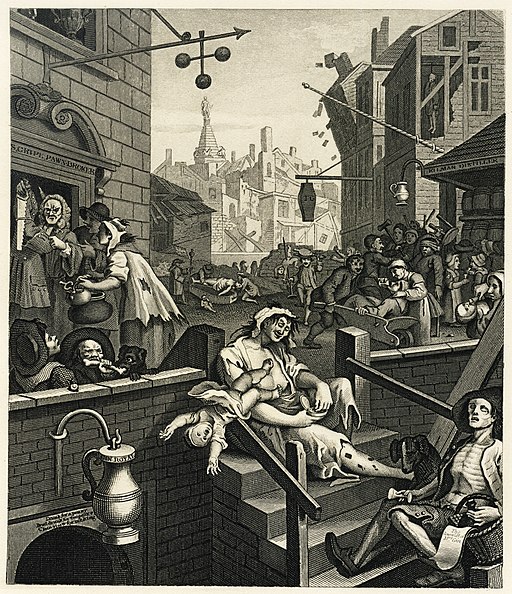 Drug addiction and substance abuse have the most misconceptions against them. Societal prejudice, improper representation in the media and other myths all contribute to painting a bleak picture and misconstruing facts. In this case, if anyone even wants to seek help, they are unable to do so because of the stigma associated with drug addiction and substance abuse.
Drug addiction and substance abuse have the most misconceptions against them. Societal prejudice, improper representation in the media and other myths all contribute to painting a bleak picture and misconstruing facts. In this case, if anyone even wants to seek help, they are unable to do so because of the stigma associated with drug addiction and substance abuse.
Hesitance to seek help for drug addiction is prevalent, which has allowed a significant number of individuals struggling with drug addictions to increase drastically. In 2015, around 24.6 million people in the US alone were dealing with drug dependence and substance abuse and this number has more than doubled in recent years.
To ensure that proper help and treatment is being made, you need to let go of many of the misconceptions that could be clouding your perception.
Addiction is a Conscious Choice
 Many people believe that staying addicted is a conscious decision made by the person. They can cite examples of people who used drugs occasionally and stopped when they wanted to. On the other hand, addiction is different. It might start out voluntarily but by the point, an addiction has developed, it is not easy to stop. In fact, the individual might not even realize it until it’s too late. Just look at all the smokers around us who say they’re are going to quit, only to come back to it a few weeks later. Nicotine, the part of the cigarette that is addictive does not make it easy on them.
Many people believe that staying addicted is a conscious decision made by the person. They can cite examples of people who used drugs occasionally and stopped when they wanted to. On the other hand, addiction is different. It might start out voluntarily but by the point, an addiction has developed, it is not easy to stop. In fact, the individual might not even realize it until it’s too late. Just look at all the smokers around us who say they’re are going to quit, only to come back to it a few weeks later. Nicotine, the part of the cigarette that is addictive does not make it easy on them.
According to the NIDA – National Institute on Drug Abuse, an addiction is a mental disorder that changes the chemistry of the brain over time. It develops a tolerance for the substance that makes one crave more and more amounts of the drug to get the same high or reaction from it. As the brain chemistry changes, the person’s ability to control impulses are also greatly impacted. Addicted people will exhibit reckless, compulsive and harmful behaviors which are difficult for them to control, regardless of how damaging it might be to them.
It is a Personality Flaw
Another common misconception is that drug addiction occurs because a person’s moral compass is wrong. They must already have questionable values to make use of drugs. Fortunately, this is not true at all. Drug addiction and substance abuse doesn’t discriminate and can affect people from all socioeconomic backgrounds, regardless of their moral compass, values, mores and norms, their gender or race.
The following are some common social and psychological factors that increase the chances of drug addiction and substance abuse:
- Environmental Factors – Peer pressure, isolation, boredom, and escapism can lead to substance abuse and drug addictions. In this instance, these are factors that are outside someone’s control.
- Exposure – Being around individuals with addictions and substance abuse can increase the chances of someone developing an addiction because they become normalized to this aspect.
- Other Disorders – Addiction and substance abuse are higher in people who have PTSD, depression or anxiety.
- Trauma –Anyone who has experienced a traumatic incident might also turn to drugs as they are looking to mentally escape the trauma, even when they are in a safe environment.
Contrary to popular belief, the financial background of a person has no impact. In fact, people who earn more have surplus income to buy hard drugs like cocaine. Needless to say, we are unfortunately hearing about Hollywood stars who have succumbed a drug habit and subsequently die. Judy Garland, Heath Ledger, and River Phoenix are just a few celebrities who have paid the ultimate price from drug addiction.
Addiction can only happen with Hard Drugs
Media representation of addictions has led to a prevalent misconception that substance abuse can only occur with the use of hard drugs. From Requiem for a Dream and Trainspotting to Scarface you will see the protagonists struggle from one bad decision to another while using hard drugs such as cocaine, meth, heroin, and alcohol.
In reality, your prescription pain medication is more likely to create an addiction. Opioids such as hydrocodone, fentanyl, and oxycodone are known for this aspect. In fact, there is a current opioid crisis happening with over 54 million people making use of prescription medicine for non-medical reasons. Even low-risk medication is problematic as people have even developed addictions with repeated use of cough syrup for non-medical purposes.
Addicts are Identifiable
Another misconception is that an addict is easily identifiable. This is one of the worst misconceptions as it hinges on stereotypes. The common belief is that if someone has a criminal background or comes from a certain background, they are either addicts or on their way to becoming addicts. In general, they are considered to be problematic people who are unable to hold down jobs, not very well dressed or are careless or have no money.
On the other hand, nothing can be further from the truth. High functioning addicts are ones who are able to hold steady jobs, earn well and are generally loved and respected by their peers. Understanding the stigma associated with drug addiction and substance abuse, they actually go to bigger lengths to hide this dark secret. It is only when their addiction has progressed to an extreme point that they are unable to maintain their high functioning status.
Alcohol Addiction is Different
 Since it is usually consumed in social settings and for recreational purposes, many people don’t consider how easy it is to develop an addiction to alcohol. Alcohol addiction is also not considered to be as harmful or damaging as a drug addiction. In fact, the NIAAA – National Institute of Alcohol Abuse and Alcoholism reported that alcoholism is more prevalent and is largely untreated and undetected.
Since it is usually consumed in social settings and for recreational purposes, many people don’t consider how easy it is to develop an addiction to alcohol. Alcohol addiction is also not considered to be as harmful or damaging as a drug addiction. In fact, the NIAAA – National Institute of Alcohol Abuse and Alcoholism reported that alcoholism is more prevalent and is largely untreated and undetected.
Due to the fact that alcohol is more easily available and so socially consumed, alcohol addicts are more likely to indulge in their addiction without any problems. Unfortunately, this fact makes alcohol addiction more difficult to identify which delays treatment.
Maybe it is partially due to the fact that it can be obtained legally, but when alcohol was made illegal, look at what happened. And now there is the question about marijuana and if it should be legalized? There are practical and legitimate reasons to argue this on both sides and the only way to officially determine if it should be legalized would be to allow it to become so. Maybe for just six months until enough statistics can be measured. With that said, some will say that many people will become a statistic by just dying from the result of being high on pot (e.g. car accidents). This is a wait and see dilemma, but one thing is for sure at this time. Relapses are also more common with recovering addicts. Nearly 88,000 deaths in the US occur on an annual basis because of alcohol addiction.
By setting aside misconceptions about drug addictions and substance abuse, you can offer your loved ones more support and help them seek out the treatment they need. Keep in mind that it will be an uphill battle, but with persistence and perseverance, the addiction can be battled.

 Maybe Al Capone had it right. No, we are not talking about his hideous crimes, but his (criminal’s and non-criminal’s) ingenuity of realizing that alcohol prohibition was not going to stop the average Joe or Jane from drinking this popular beverage, otherwise known to some as ‘booze’ or ‘happy juice’.
Maybe Al Capone had it right. No, we are not talking about his hideous crimes, but his (criminal’s and non-criminal’s) ingenuity of realizing that alcohol prohibition was not going to stop the average Joe or Jane from drinking this popular beverage, otherwise known to some as ‘booze’ or ‘happy juice’. Now that we have elaborated the benefits, we can look at the downside of drinking alcohol – amd there are many. First and foremost, is it important to note that caution is advised when drinking because the more you drink, the greater the chance there is of issues rising, or should we say, there is more of a chance of just plain getting yourself in trouble, to say it mildly.
Now that we have elaborated the benefits, we can look at the downside of drinking alcohol – amd there are many. First and foremost, is it important to note that caution is advised when drinking because the more you drink, the greater the chance there is of issues rising, or should we say, there is more of a chance of just plain getting yourself in trouble, to say it mildly.